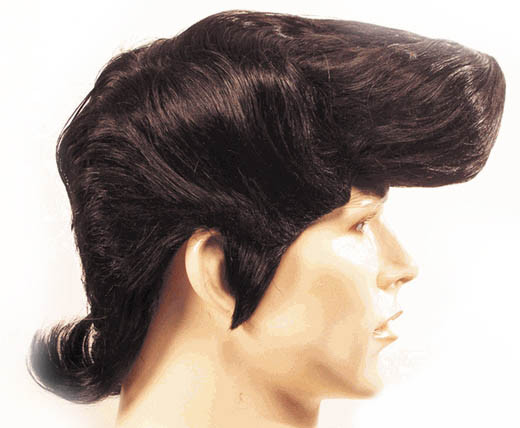
The 1950's was a very influential period for creating style in America.
It was a time where war had ended and America was rebuilding their economy while creating social change. It was a fresh new time, World War II was over and America was ready for a new look. Some of these new looks included a fun and big rockabiliy hair, bobs, pixie cuts, and more.
Many celebrities created their own looks which became ever so popular. Lucille Ball made the poodle cut popular. Curly-haired women loved her short au natural look. The rebel himself, James Dean, is to thank for the pompadour. Bettie Page had a wonderful thick, black hair with short and straight bangs that still remains a staple in women's fashion. Grace Kelly gave us the dramatic side part with beautiful blonde hair. This style is still being copied even today. Audrey Hepburn had the gamine style down with her baby bangs and innocent, natural look. She had started a major trend with this look. Elizabeth Taylor had style too, but her short hair was all about volume. Connie Francis had an impressive bouffant, while Sophia Loren had a dramatic European bouffant. Billie Holiday was known for her ponytail. The ponytail was a big innovation for 50's hair styles.
The 50s were characterized by a period or family values, stability and utter prosperity. This is a resounding theme in all of the most elegant 60s hairstyles, for both men and women. They were characterized by class, elegance, and supreme stature. Tailored and polished, the hair was quite reminiscent of this Golden Age of family and prosperity. Although this age of perfection would not last with the advent of the 1960s, it introduced people to a world of structure and tradition.
Although this was a conservative era, it introduced a variety of different cultural aspects and styles, as well. This era followed prolonged years of societal and financial frustration, which resulted from a stock market crash and two world wars. Many of the most notable 1950s hairstyles were invested for the elite and wealthy, making them out of reach for the general population. However, the introduction of wigs made it possible for working class individuals to emulate starlets such as Marilyn Monroe.
Although beauteous and sophisticated, women’s hair was far less complex in the 1950s than it was in the 1940s, placing wigs in less demand among the general population. It appears that the more simplistic a hairstyle is the less need there is for a wig featuring that particular style. Elizabeth Taylor was undoubtedly one of the most reputable, classic icons of her time, and her fame has echoed through generations. She is the epitome of 1950s beauty, and her hair perfectly exemplifies the regal simplicity of 1950s hairstyles.
Various hair products were being introduced to the market, allowing for greater experimentation in regards to hair. Hairstyles existed in a variety of lengths, and many people mimicked what they observed on the big screen, attempting to adopt the same color and style of their favorite celebrities. Hence, Elizabeth Taylor was a formidable influence in this respect, and many people emulated her dark, curly raven locks of hair. Older women typically preferred shorter hair styles. However, Audrey Hepburn was a primary example of a young woman showcasing a short, pixie cut in the 1950s.
The influence of the 1950s has inspired many of today’s most famous celebrities, including Christina Aguilera, who has repeatedly featured a classic, glamorous, Hollywood style on the red carpet. Katy Perry and Dita von Teese are also enamored with the classic styles of such eras.
With regard to men’s styles of this era, clean cut, refined and polished was the way to go. Men were not granted as much liberty and flexibility in their hair styling. It was normally parted, or slicked in a very elegant fashion. It was customary to maintain a short length of hair. But as one may have observed, the 1960 disassembled these rules, and long hair became a continuing trend among men.
As noted, the 1950s had an interesting dynamic, reinforcing elitism, wealth, prosperity and tradition. Yet, in contrast to these conservative values, women-whether they wore wigs or not-experimented heavily with their style and were less rigid about their hair styling techniques.
Many of the 50's hairstyles live on today!
